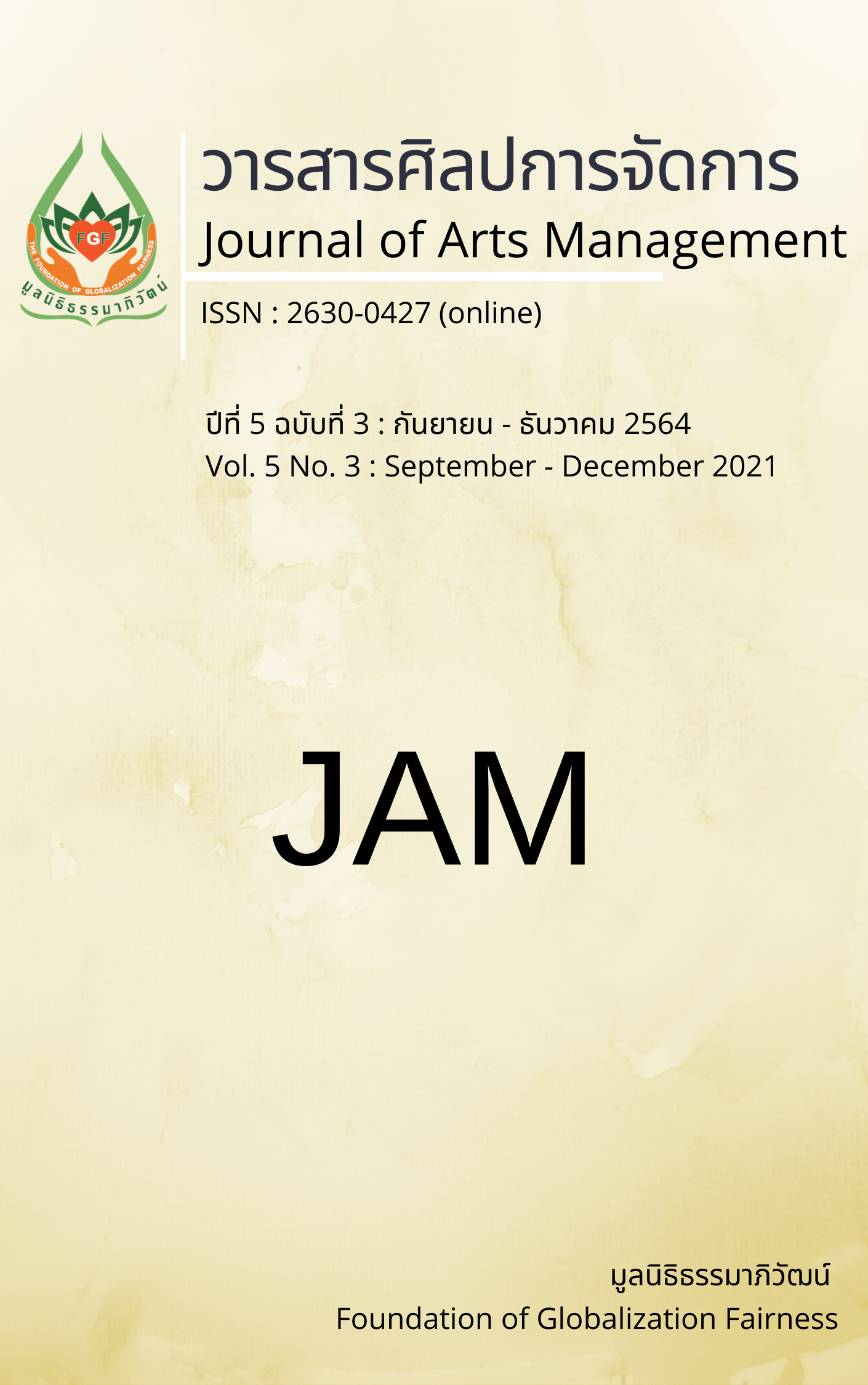Contemporary Conservative Thai Painting Course Development for Undergraduate Art Education Curriculum
Main Article Content
Abstract
The purposes of this research were 1) to study the details, method, creation, and conservation of Thai painting; and 2) to develop Thai contemporary paintings as conservative courses for undergraduates. This research was mixed method by selecting 15 people to be interviewed, which consisted of professors of Thai painting subjects from Arts Education, professors of Thai painting from Bachelor of Arts, Thai contemporary artists who have experiences of creating works of art, Thai painting conservationists, art historians and theorists, along with 2 university institutions that contributed to Thai painting by using interview forms and class observing. The result showed that the Thai painting subject in Arts Education’s syllabus can create a contribution to conserving Thai painting and Thai contemporary art through the study and development of Thai art works. In preparing Thai contemporary art lessons, there should be: 1) Purposes: To establish knowledge and understanding in conservation of Thai painting, Thai culture painting, and Thai conservative painting which portrays both historical origin and method of creation to pass on knowledge to others in the future; 2) Detail: Especially on conservation of Thai painting, maintenance conservation, protective conservation, and educational preservation. On Thai painting subject, it is to specify the value of detail, form, and technique. In the Thai conservative painting subject, it is important to specify the method of creating work; 3) Teaching method: lecturing in theory and in a practical way to create a tour for the students to try by themselves, along with visiting the original places; 4) Teaching media: should use modern tools in teaching combined with the real specimens; and 5) Evaluation: on the theory side, some papers or research will evaluate the outcome and can contribute to estimating the practical work.
Article Details
Views and opinions appearing in articles in the Journal of Arts of Management It is the responsibility of the author of the article. and does not constitute the view and responsibility of the editorial team I agree that the article is copyright of the Arts and Management Journal.
References
Bates, J. K. (2000). Becoming an art teacher. Wadsworth/ Thomson Learning.
Battelle for Kids. (2020, May 15). Framework for 21st century learning. https://www.battelleforkids.org/ networks/p21/frameworks-resources
Bhirasri, S. (1959). The value of Thai mural painting. The Fine Art Department.
Khrouthongkhieo, N. (2013). Thai painting’s culture perception. CU Print.
Maneechot, S. (1986). Thai painting. Odeon store.
Na Songkhla, W. (2004). Conservation of Thai mural art: professor “Nak” workmanship. Thai Art Department, Faculty of Painting Sculpture and Graphic Arts, Silpakorn University.
Nualsawad, A. (2015). Thai contemporary art. Office of Contemporary Art and Culture, Ministry of Culture.
Office of The Higher Education Commission. (2019, March 6). Thai qualifications framework for higher education, 4-years education curriculum, 2019. http://www.mua.go.th/users/tqf-hed/news/news6.php
Rattana, S. (2006). Thai art textbook, Thai Lacquer Painting set. Sipprapa.
Saingam, T., Lertsiri, K., & Thepsuparungsikul, N. (2016). Comparison of binders in ground layer for restoration of Thai mural painting. Veridian E-Journal, 3(5). 173-181.
Saisingha, S. (2013). Buddhist art in Rattanakosin period, Technique Work Development and Adapting Concept. Muang Boran Press.
Sinlarat, P. (2014). 21st Century’s skills must overcome western’s obstacles. Dhurakij Pundit University.
Sukkeaw, P. (2006). Aesthetic of mural painting: Adornment of Thai painting. Siam Scholars.
Thiamchan, A. (2015). Conservation of Thai mural painting. Office of Archaeology, The Fine Arts Department, Ministry of Culture.
Thungmhungmee, T. (2012). Tœmtem chintaphap tœm si chittrakam: Conservation of Wihan Lai Kham, Wat Phra Singh Mural Painting. Chotana Print.
Wattanasin, W. (1998). Secondary school’s art. Division of Education Technology, Office of Academic Resources of Prince of Songkla University.


